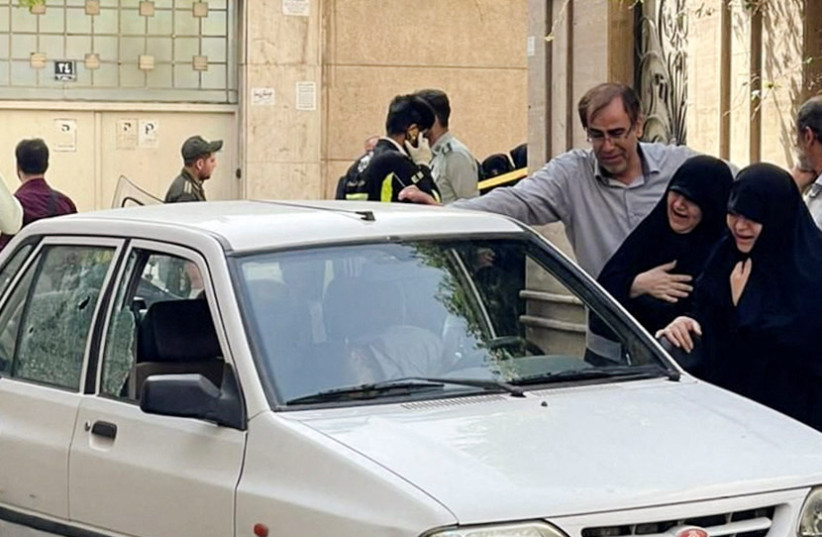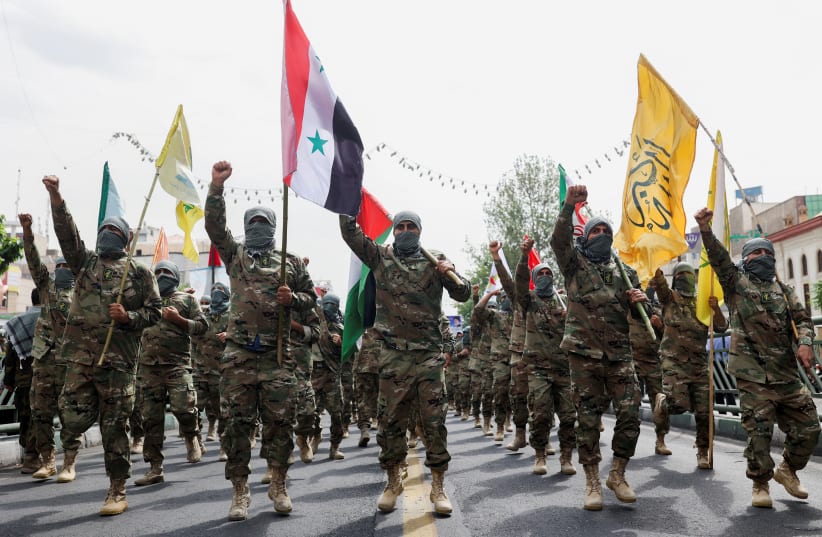Following the killing in broad daylight of key IRGC operative Col. Hassan Sayad Khodayari, Iran has gone very public, blasting out photos of the scene and vowing retaliation. But how will Iran actually retaliate?
Iran's problem
The problem for the regime is that the more of these high-profile assassinations of atomic scientists and Islamic Revolutionary Guard Corps officers it endures, and the more it admits it is losing, the harder it becomes to ever properly respond and, in its view, “even the playing field.”
The assassination reports depict a key individual from the field who may have been behind threats to Israelis and Jews abroad and evoke reports in foreign media in recent months about threats to Israelis in Turkey and Cyprus.
The drone war

Khodayari may even have been linked to increasing threats from Iran’s drone program.
Since 2018, Iran has expanded its drone threat against Israel and other countries in the region. Iran launched drones in February 2022, in March and May 2021, in February 2018 and other times.
Tehran has vowed to uncover who was responsible for Khodayari’s death. The IRGC has vowed to “take revenge.” This means Iran will find some way to operate its ongoing shadow war against Israel.
It knows it must at least pretend to retaliate in some fashion if it is not to appear completely vulnerable.
But why drones?
Drones are Iran’s weapon of choice because they are unmanned, and it doesn’t have to sacrifice military personnel.
However, this strategy doesn’t always work. In August 2018, the Islamic Republic encouraged Hezbollah to move drones to an area near the Golan Heights. The Hezbollah drone team was neutralized.
In addition, Defense Minister Benny Gantz has increasingly warned of the drone threat, shining a spotlight on new drone centers in Iran where the threat originates and also pointing out how Tehran traffics in drone technology and trains proxies in their use.
Across the sea, the US Congress is seeking to highlight the Iran drone threat as Israel, the US, the UAE and others are working on counter-drone, or what is known as counter-UAS (unmanned aircraft systems), technology. This can include drones that down other drones and the use of rockets, lasers, gun sights and radars, as well as jamming technology.
Iran has basically been poking at Israel, and what it is finding is that Israel is very aware of the emerging threat and prepared to confront it with global partners.
What can Iran do?
But Iran has other options. It recently targeted the Kurdistan Region in northern Iraq with ballistic missiles. That attack, for which Iran claimed responsibility, targeted a site near Erbil that it claimed was linked to Israel.
Iran has long believed the autonomous Kurdistan Region was closer to Israel than Tehran would like it to be. It has worked sometimes to divide or undermine the region, which is among Iraq’s most stable, successful, safe, secure and wealthy. Iran needs the Kurdistan Region for trade and other reasons. But it also thinks Israel may have a presence there and has alleged via state and pro-government media that “Mossad,” Israeli or “Zionist” assets are in Iraq.
As such, Iran has threatened, since Khodayari’s assassination, to strike at the Kurdistan Regional Government. This may be bluster, but it is a credible threat because the Islamic Republic has used Shi’ite militias in the Nineveh plains to target oil facilities near Kalak and other sites in the past, including a Turkish base at Bashiqa.
Iran is willing to do whatever it can to respond, even if it means attacking a target that can’t fight back, so that the regime can pretend it did something.
